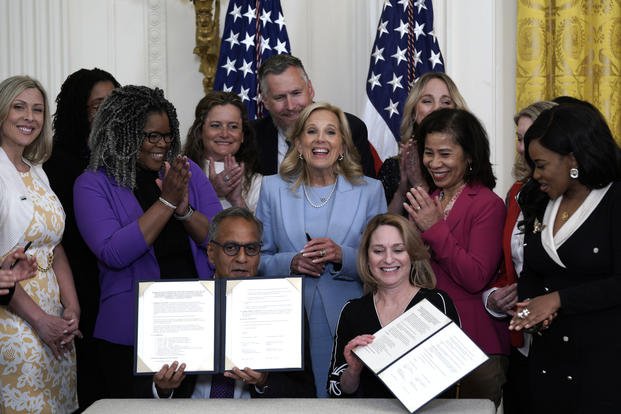How Living Organ Transplants Work for Service Members, Vets & Their Donors > U.S. Department of Defense > Story
 Giving the gift of life to others through organ donation is one of the most selfless things a person can do. Many people think that's something you do only after you die, but doctors encourage donors to do so while they're still alive — and
Giving the gift of life to others through organ donation is one of the most selfless things a person can do. Many people think that's something you do only after you die, but doctors encourage donors to do so while they're still alive — and
How Living Organ Transplants Work for Service Members, Vets and Their Donors > U.S. Department of Defense > Story
 Giving the gift of life to others through organ donation is one of the most selfless things a person can do. Many people think that's something you do only after you die, but doctors encourage donors to do so while they're still alive — and
Giving the gift of life to others through organ donation is one of the most selfless things a person can do. Many people think that's something you do only after you die, but doctors encourage donors to do so while they're still alive — and
Jill Biden Says Agreement to Let Federal Employee Military Spouses Work from Overseas Is Overdue

Associated Press | By Darlene Superville
Published
WASHINGTON — Jill Biden[1] said Wednesday that allowing federal employees who are military spouses to work from overseas is a common-sense “national security imperative” that is long overdue.
The first lady spoke at a White House ceremony she hosted with Deputy Defense Secretary Kathleen Hicks and Deputy Secretary of State Richard Verma, who signed a permanent memorandum of agreement between their departments to ease approvals of remote work under the Domestic Employees Teleworking Overseas[2] program for these employees.
The agreement was among steps to help military families that President Joe Biden[3] outlined in an executive order[4] he signed last June at Fort Liberty[5] in North Carolina. It also is an outgrowth of the first lady’s work with Joining Forces[6], her White House initiative to support military and veteran families.
Jill Biden said she shared stories the spouses told her with her husband “and then he took action.”
“A critical part of the executive order is allowing military spouses who work for the federal government to take jobs with them" when their spouse is deployed overseas, Jill Biden said. “With today's agreement, we're making that a reality. It's common sense, it's simple and it's long overdue.”
Hicks and Verma signed the agreement in front of an overwhelmingly female audience seated in the East Room. Hicks handed her pen to the first lady.
Jill Biden said military spouses also serve the United States even though they don't wear a uniform and that the government has a responsibility to serve them, too.
“This isn't just a moral obligation,” she said. “It's a national security imperative.”
The first lady said the principle of an all-volunteer military, which is the case in the U.S., is put “at risk when we force our service members to choose between their love of country and the families who serve alongside them. We must give them the support they need to choose both.”
Military spouses face a 21% unemployment rate that has not significantly changed over the past decade, according to information from the White House. More than 16,000 military, veteran and surviving spouses work across federal departments and agencies.
Jill Biden cracked a joke at the beginning of her formal remarks, saying she was really excited because “like so many of you, I am a working spouse of a government employee.”
Related: The Paid Job Interview: Hiring Our Heroes' Secret to Military Spouse Employment[7]
Military Headlines[8] Family and Spouse[9] Family Life[10] Military Life[11] Outside Continental United States - OCONUS[12] Federal Jobs[13] White House[14] Department of Defense - DoD[15]
© Copyright 2024 Associated Press. All rights reserved. This material may not be published, broadcast, rewritten or redistributed.